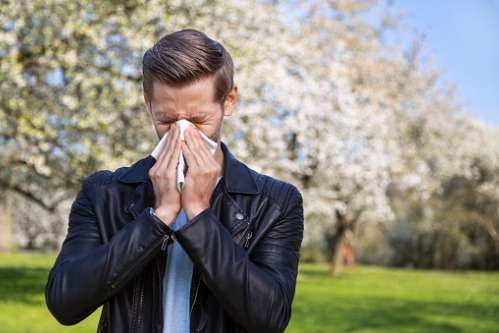
Common Indoor Allergens and How to Avoid Them
Staying indoors when pollen levels are high won’t always save you from those awful allergy symptoms. Dust mites, pet dander, mold, and even cockroaches can cause allergy symptoms indoors. Here’s a rundown of the most common indoor allergy triggers to watch for and ways you can avoid them.
Dust Mites
Dust mites are microscopic, insect-like pests that live in the bedding, mattresses, furniture and carpets in homes. They feed on dead human skin cells and tend to thrive in temperatures above 70 degrees. Dust mites are harmless, in the sense that they don’t bite, sting or burrow into the human body. However, their fecal pellets and body fragments can cause allergy symptoms.
When it comes to getting rid of dust mites, allergists recommend purchasing allergen-proof encasings for bedding and pillows. You will also want to wash your linens in 130-degree temperatures every week, if possible.
Pet Dander
The proteins found in a pet’s dander, saliva and urine can cause an allergic reaction or aggravate asthma symptoms in some people. Common allergic reactions include nasal congestion, facial pressure and pain, and itchy, inflamed eyes. Pet dander can be anywhere, even in homes that have never housed pets, from tracking in outside allergens on our clothes, shoes and belongings.
The best treatment for a pet allergy is to avoid contact with cats or dogs. If possible, you will want to keep pets out of your home and avoid visiting homes that house pets you are allergic to. If this is not enough to keep your allergies at bay, you may want to contact your allergist and discuss other options for medicine or immunotherapy.
Mold
Mold is another common indoor allergen that affects many people. Molds are tiny fungi that thrive in damp environments and in places that contain a lot of moisture. While most allergic symptoms caused by fungus spores are most common during July to early fall, fungi can still grow in many places, including indoors, which can cause allergic reactions all year round.
To reduce your exposure to mold spores inside, you will need to lower your indoor humidity below 50%. You should try to keep your humidity 45% or lower to reduce mold spores in your home. Mold and mildew build up in bathrooms, basements, and laundry areas, so it is important to keep an eye on these areas and reduce dampness.
Cockroaches
Similar to dust mites, cockroaches contain a protein that is an allergen for many people. Their saliva, feces and shedding body parts can trigger both asthma and allergies. When these allergens are kicked up in the air, they can cause aggravating symptoms, such as coughing, nasal congestion, skin rash, wheezing, and sinus infection.
A few ways to avoid cockroach exposure is by covering all trash cans tightly, storing food in airtight containers, sweeping up any food crumbs in the house, fixing leaky pipes under sinks, and sealing any cracks in the walls and floors.
Get Allergy Tested at Northeast Allergy
With the help of an allergist, your symptoms may be prevented or controlled with major improvement in quality of life. The first thing an allergist will want to do is perform tests to determine what allergens are involved. Once that is addressed, they will develop a treatment plan for your individual condition with the goal of you living symptom-free!
At Northeast Allergy, Asthma & Immunology, we can discover hidden allergens and provide additional treatments, including immunotherapy, to help you feel your best. Contact us today to schedule your appointment.



